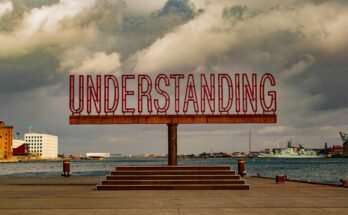As 2023 comes to a close, homeowners in Colorado are already looking ahead to plan for 2024. One important consideration is homeowners insurance and whether any changes may be on the horizon.
Wildfire Risk and Insurance Costs
Perhaps the biggest factor shaping Colorado’s insurance landscape is the ongoing threat of wildfires. In recent years, the state has experienced some of its largest and most destructive wildfires in history. 2022 saw several devastating wildfires across the state, including the Flagstaff Fire in Boulder County that destroyed over 100 homes.
As wildfires increase in frequency and severity due to climate change, insurance providers are responding by carefully re-evaluating wildfire risk across different areas of Colorado. This is leading to rising insurance costs, especially in high-risk zones near forests and wilderness. According to the Colorado Division of Insurance, premium rates increased an average of 9% in 2023, continuing an upward trend seen in the last five years.
Experts predict further price hikes could be on the way in 2024 as insurers work to stay financially solvent in the face of growing wildfire liabilities. Homeowners located in severe risk areas like the mountains and foothills should prepare for double-digit percentage increases to their annual premiums. Companies may also get more selective about which areas and properties they are willing to provide coverage for.
Understanding Your Wildfire Risk Rating
A key factor determining your insurance costs is your specific property’s wildfire risk rating. All insurers in Colorado now utilize sophisticated modeling and mapping to assign a risk rating on a scale of 1-10 to individual addresses.
Higher risk scores between 7-10 mean properties are located in Severe or Extreme danger zones near dense forest, steep terrain, limited access for firefighters, etc. Homes in these areas may see their insurance become prohibitively expensive or difficult to find.
Moderate risk scores of 4-6 still put properties in High danger, but costs may only rise moderately compared to lower-risk counterparts. The lowest 1-3 risk tier classifies homes as Minimal threat, so insurance impacts should be lessened.
Checking your property’s published risk rating on the Colorado Wildfire Risk Assessment Portal can help you plan for potential premium changes and explore mitigation options to lessen the danger. Understanding this number is key for making strategic decisions about coverage.
Mitigation Efforts to Reduce Risk & Insurance Costs
Fortunately, there are proactive steps homeowners can take to lower their wildfire risk rating over time and stabilize increases. By making investments in fire-resistant materials and defensible space around properties, the rating could be improved to a lower category leading to long-term insurance savings.
Some highly effective mitigation techniques recommended for Colorado include:
- Creating at least 100 feet of defensible space by pruning trees and removing flammable brush
- Installing a roof and siding made of non-combustible materials like metal, composite, or concrete
- Replacing older wood fencing and decks with non-combustible alternatives
- Enclosing eaves and vents with wire mesh to prevent ember entry
- Installing dual-paned or tempered glass windows
- Landscaping with fire-resistant plants and keeping grass mowed
Insurers are starting to recognize mitigation efforts through discounts or free reassessments that could lower a home’s risk rating score over the long run. Taking action now can help offset rising insurance costs for years to come.
Shopping for the Right Policy
Given market dynamics, it’s more important than ever for Colorado homeowners to shop around and find the best-priced, comprehensive coverage in 2024. But what should policyholders look for?
- Coverage limits of at least $500,000 for the dwelling and $250,000 for personal property are recommended minimums. Higher limits may be needed for expensive homes and assets.
- Replacement cost valuations to fully rebuild your home as-is, instead of deprecated actual cash value, in the event of a covered loss.
- Liability protection of $500,000 per occurrence is standard but consider $1 million for higher asset homes.
- Extended replacement cost riders to cover rebuilding overages of up to 30%.
- Ordinance or law coverage for mandatory code upgrades after a loss.
Getting quotes from multiple insurers both online and through local agents, can uncover significant price differences even for similar coverage. Be sure to compare apples to apples and find the best value.
Additional Living Expenses & Loss of Use
Another crucial component of a homeowners policy is coverage for additional living expenses (ALE) and loss of use. These provisions kick in if a covered loss like a wildfire destroys your home, making it uninhabitable for repairs.
ALE pays for extra housing costs like hotels, meals, storage, etc., during rebuilding. While temporary housing is standard for 12-24 months, consider extended ALE coverage if major damage delays restoration. Loss of use coverage compensates for the diminished value of your home until repairs are complete.
These benefits help bridge financial gaps after a disaster. As risks rise, ensure your policy provides sufficient funds, like annual limits of 20-25% of your dwelling coverage amount, for continued security through reconstruction.
Wildfire Insurance Options
For homeowners in the highest-risk Colorado locations, it may make sense to explore alternative insurance options beyond traditional carriers. These include:
- FAIR Plans: Colorado’s FAIR Plan is a government-run insurer of last resort. Rates are higher, but coverage is guaranteed if no regular market is available.
- Surplus Lines Carriers: Non-admitted insurers with more flexibility to underwrite very high-hazard properties, sometimes at higher costs.
- Community Wildfire Protection Plans: Some HOAs leverage group mitigation/maintenance efforts to negotiate more affordable master plans.
- Multiperil Crop Insurance: Intended for agriculture, but some policies now cover residential wildfire peril and aftermath costs.
Weighing all available options can help secure critical protection even if your primary insurer drops coverage or prices rise out of reach. Always maximize protection in high-severity zones.
FAQs about 2024 Colorado Homeowners Insurance
How can I lower my insurance costs beyond mitigation efforts?
In addition to reducing wildfire risks around your property, consider raising your deductible from $500 to $1,000-2,500. Higher deductibles, lower premiums, and savings from wildfire mitigation make absorbing larger initial costs more feasible. You can also check for good student, claims-free, or multi-policy discounts.
Will insurers drop coverage in certain high-risk areas?
It’s possible that by 2024, some companies will non-renew or decline to write new business for properties located in the most severe threat zones (rating 8-10). Usage of the FAIR Plan safety net program may increase accordingly. Stay engaged with your insurer annually to avoid unexpected non-renewals.
What else impacts insurance rates beyond wildfire risk?
Carrier-specific factors like overall claims experience, reinsurance costs, investment returns, and regulatory requirements also influence premium changes year-over-year unrelated to an individual property’s risk characteristics. In addition, cost drivers like theft, liability loss trends, and natural catastrophes nationwide feed into rate determinations across insurers.
How does homeowners insurance differ from separate fire insurance policies?
Traditional homeowners insurance bundles property coverage for both fire damage and additional perils like theft, falling objects, and liability protection into one convenient policy. Separate fire insurance only responds to wildfire losses, omitting other essential protections. Unless rates are significantly different, a full home policy is usually recommended for complete coverage.
What should I do if I can’t find affordable coverage?
Don’t become uninsured, as any losses would then be catastrophic with no assistance for rebuilding. Contact the Colorado Division of Insurance for referrals to state high-risk pools or surplus lines insurers. Also, check if any subsidized programs become available through local fire departments or forestry services. As a last resort, the FAIR Plan exists specifically to guarantee coverage when no private market options are left.
In summary, Colorado homeowners should expect ongoing volatility in the insurance sector due to increasing wildfire risks across the state. By understanding your property’s specific danger level, investing appropriately in mitigation, shopping wisely for coverage, and considering all options – policyholders can continue securing essential protections even as the market changes. Staying informed and planning ahead will help navigate challenges and uncertainties on the horizon for 2024.



